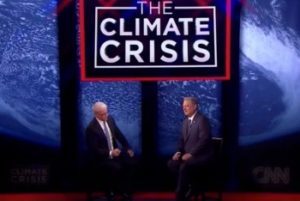by E. Simon, 27 décembre 2019 in ScienceClimatEnergie
1/ Introduction
Face aux gesticulations de masses organisées contre les énergies fossiles et le CO2, dits nuisibles, nos amis logiciens examineront utilement la situation à l’échelle planétaire. Une situation où nos 500 millions d’habitants d’UE ne pèsent finalement que 1/15e de l’actuelle population mondiale !
Tâchons d’identifier des faits chiffrés, ils reflètent la vie réelle sur notre globe. Leurs ‘tendances lourdes’ y échappent à l’emprise des idéologues ! Si nos besoins capacitaires belges post-2025 provoquent déjà l’entrechoc d’avis entre la CREG (régulateur belge) et l’administration SPF (Energie, plus experts), il sera plus éclairant de raisonner dans une atmosphère sans frontières, à l’échelle planétaire. Là s’ajoutent les dimensions géopolitiques et divers facteurs de sensibilités culturelles. Les joutes de pouvoirs institutionnels y deviennent alors titanesques ! L’Union Européenne en restera-t-elle subordonnée aux thèses du GIEC et aux manoeuvres aux COP21 (… COP25) onusiennes ? Une thèse vaut ici : les 5 pays dits BRICS (ou Brésil/Russie/Inde/Chine/Afrique du Sud) et d’autres Etats ne suivront pas les dogmes prônés par l’ONU. Sa démonstration par l’absurde en est perceptible dans les faits. Explorons-la davantage ?
Cette note consacrée au MIX mondial passe en revue les points suivants :
• Où en sommes-nous (UE, monde) actuellement ?
• Vers où le reste du monde se dirige-t-il, à l’horizon planifié de 2040/2050 ?
• Trancher le noeud gordien des perspectives exige de chiffrer les + et les – !
• Combien cela coûtera-t-il à l’humanité (celle apte à le payer) ?
• En guise de conclusion, à ce stade …
…
by K. Richard, December 30, 2019 in NoTricksZone
CO2 concentrations rose from 345 ppm to 398 ppm in the 29 years from 1985 to 2014. Mainstream scientists sympathetic to the anthropogenic global warming (AGW) paradigm have nonetheless reported the overall greenhouse effect forcing has been flat to declining throughout this period.
1. Cess and Udelhofen, 2003 Due to the downward trend in cloud cover, absorbed shortwave radiation increased and the overall greenhouse effect’s forcing influence declined from 1985-1999. The authors consider these trends to be driven by natural variability.
…
2. Song et al., 2016The overall greenhouse effect went on “hiatus” from 1992-2014, with the combined forcing effects of water vapor, cloud, and CO2 declining by -0.04 W/m² per year (-0.4 W/m² per decade) during this interval. Again, the main reason for the declining greenhouse effect trend was the downward trend in cloud cover.
…
3. Kato et al., 2018 Downward longwave radiation (DLR), or the overall greenhouse effect, responds to variability in water vapor and cloud. CO2 isn’t mentioned in the paper as a factor influencing DLR. Total DLR was negative (-0.2 W/m²) during this decade, insinuating rising CO2 had no net warming climate impact. In contrast, downward shortwave forcing increased by +2.2 W/m² per decade from 1986-2000 and by +1.3 W/m² from 2005-2014. These positive shortwave absorption trends explain the warming during this period.
…
by J. Jessop, December 30, 2019 in ClimateChangeDispatch
In the final days of 2019, there is much to reflect upon events of the past year and, with the closing of the second decade of the 21st century, much to reflect upon how climate change alarmism has itself alarmingly morphed into something much more dangerous, visceral, urgent, ideologically driven and immediate as regards public perception and societal impact.
A decade during which global warming faded into obscurity (on account of the fact that there wasn’t any from 1998-2013) to be replaced almost universally by the more politically correct term of ‘climate change’, which has itself now been largely displaced in activist circles and the media by the terms ‘climate emergency’ and ‘climate crisis’.
Ironically so, because, bereft of an actual climate crisis, alarmist scientists and activists have proceeded to invent one, linguistically, as in the case of the Guardian’s newly introduced style guide and by co-opting extreme weather events and their impacts into the general narrative.
…

…
Judith Curry has written an excellent push back article to the lukewarm attempt by Wallace-Wells, among others, to dial down the alarmist hype in the light of the RCP8.5 criticisms, whilst still maintaining the necessary ‘scary’ projections of future warming.
La géologie, une science plus que passionnante … et diverse

